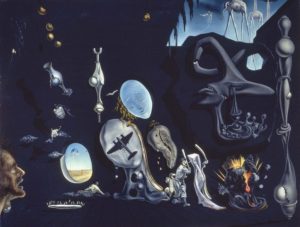Holding Fast to the Stories We Want to Believe
I got into an interesting discussion about a comment I made in reviewing King Richard. I said:
“Before I saw the film, all I knew of Richard Williams was the character the media portrayed him to be: fanatical, egotistical, and abusive. The story told here, which was approved by Venus and Serena, showed evidence of the former two traits but none of the last. On the contrary, the Richard we see in King Richard is a loving and devoted father, doing his best to raise five healthy, successful daughters.
“I haven’t done any research to determine the veracity of this portrayal. If it’s good enough for Serena and Venus, it’s good enough for me.”
A friend took issue with that last sentence. “By all accounts,” he said, “Williams was more horrible than the movie indicated.”
One man. Two stories. Which should we believe? The extremely negative characterization put out by the media for so many years? Or the more benign view presented by Richard Williams’s daughters in the movie?
We debated the question earnestly. But neither of us was persuaded by the other’s arguments.
Afterwards, I was thinking about other, similar media characterizations. There was Woody Allen. Then Mel Gibson. And Alec Baldwin. And Jussie Smollett. And at the top of the YouTube hit list right now: Johnny Depp.
In each of these cases, there were two narratives. A very damaging one that caught fire in the tabloids. And another, more nuanced, view supported by a few friends and colleagues. For all but Jussie Smollett, the damaging story prevailed. Johnny Depp’s trial may determine whether he can restore his professional and personal reputation.
The same phenomenon has occurred in recent years with many public figures. Professional athletes. TV personalities. Politicians. And even social media influencers. The most flagrant example is narratives we’ve been sold about Donald Trump. One has him as a populist hero in touch with the working class. The other as a racist, narcissistic, homophobic, transphobic, and misogynist megalomaniac. And even now, two years after he vacated the White House, those two stories have not changed. Nor has the number of Americans – approximately 100 million each – that believe them.
As someone that’s spent a lifetime selling ideas and information, I’m attentive to the mechanisms of persuasion. And, as any experienced marketer will tell you, the single most powerful way to persuade someone of anything is to begin your sales pitch with a dramatic story. Facts are helpful in supporting one’s beliefs. But the beliefs are born in storytelling.
Stories activate the imagination. And, as neurobiological studies have shown, the imagination conjures up the same sensations – visual, auditory, olfactory, even the sense of motion – that are aroused by real life experiences. (In remembering experiences, the brain cannot distinguish between what was imagined and what was real.)
Facts are processed differently than stories. They are taken in and stored in the neocortical center of the brain, which is designed for logical and rational thinking. It does not have receptors or storage for feelings. (This is the part of the brain that makes Homo sapiens sapient.)
That is why we trust our feelings. They are stored unconsciously and are felt more deeply and more strongly than stored facts. Once rooted, they are almost impossible to deracinate.
And that, I think, is why it is so difficult for us to give up the stories we have come to believe. It’s why my friend and I won’t give up our beliefs about what kind of father Richard Williams really was. Absent the prejudice of deeply stored feelings, we can have a rational discussion that can change our minds. But once we “live through” a dramatic story – whether it is real, imagined, or conjured by a clever journalist or copywriter – facts no longer matter to us. In our limbic and reptilian brains, giving up our stories feels like giving up our very lives.
 MarkFord
MarkFord

